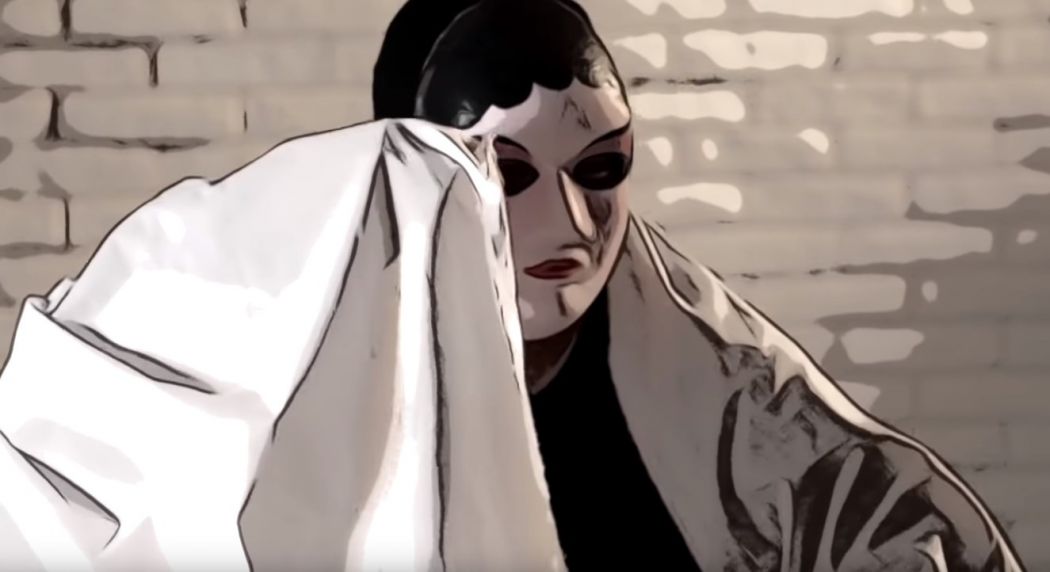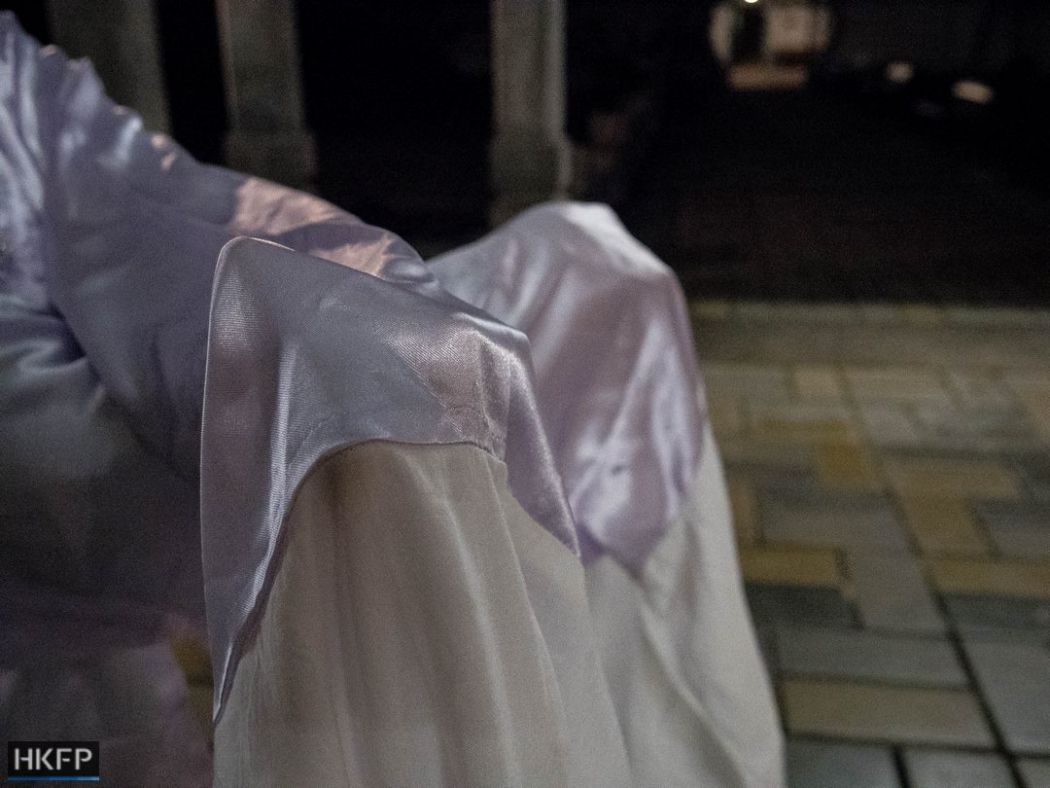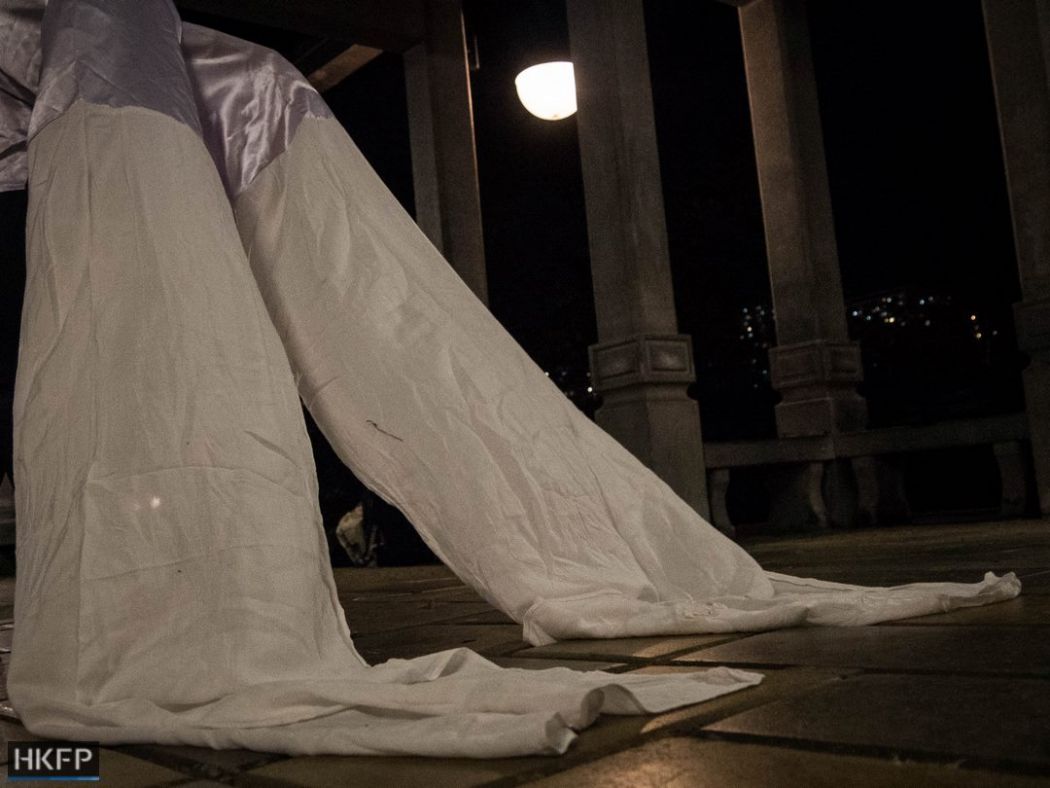A poignant mashup of popular protest songs set to the sharp clangs and falsetto vocals of traditional Cantonese opera is the latest community-led effort to bridge Hong Kong’s generational divide.
The video “(Cantonese Opera Version) Glory to Hong Kong x Sia-chandelier” was uploaded to YouTube last month by a group identified only as “Hongkongers who have a passion for Cantonese opera.” It featured an unusual blend of traditional performance art and contemporary political references which, its creators told HKFP, seek to convey pro-democracy protesters’ messages to older generations who enjoy opera but struggle to connect with the movement.

One of the musicians behind the song, who goes by the pseudonym Horseman, said the piece was composed in a day and was intended as a heartfelt paean to the seven-month-long protest movement for democratic reform and police accountability.
Fading into a closeup of a bamboo flute, with the character “unity” pasted on it, the song begins as a doleful take on the stately anthem “Glory to Hong Kong,” penned by an anonymous composer and released in August. The catchy tune inspired an orchestra-led video spin-off, which the Cantonese opera group took inspiration from.
“We pledge, no more tears on our land, in wrath, doubts dispell’d we make our stand,” the familiar lyrics begin, bouncing between a playful medley of twangs and percussive slaps.
Suddenly, Sia’s 2014 electropop hit “Chandelier” comes crashing in, to the shrill vocals of “Death to black cops!” – a section which Horseman said was inspired by a scene in Jeffrey Lau’s A Chinese Oddessey Part Two: Cinderella, where the Longevity Monk comically sings “Only You.”

A spear-wielding military general then appears as the lyrics “Stop hurting our children” flash across the screen, prompting a female figure to fall to the floor. Her water sleeves (seoi zau) flutter behind her.
“The flowing sleeve represents citizens or youngsters being struck down by the general,” Horseman said, adding that the spear – often signifying war in Cantonese opera – symbolised the guns and tear gas used by police.
The video mixes familiar protest iconography with elements of traditional Chinese opera in an effort to bridge societal divisions. Near the end, a female character lifts a traditional Chinese parasol, synchronised with a group of black-clad protesters holding umbrellas, to the lyrics “In common breath: Revolution of our times!”.
Blue ribbon industry
Since its release, the video has captured the attention of online commentators including Cantopop singer-activist Denise Ho, who praised the song for its creativity.

“Many teenagers think that Cantonese opera is very old-fashioned but I saw a lot of comments saying that after watching the video, they want to watch more Cantonese opera and try to understand more,” said one of the video’s coordinators, Yat, who is using a pseudonym.
“They were surprised it was so down to earth,” added flautist Man, also using a pseudonym. “They originally thought it was just for elderly people but now they said – oh it’s really amazing and we can put lots of elements and storytelling together to make it interesting.”
Inspired by the movement’s burst of creativity, the Cantonese opera lovers were able to realise their vision through word of mouth among protester-friendly circles.
Although the clip was feted among pro-democracy groups, such as on the Reddit-like forum LIHKG – often used to discuss protest tactics – its impact has also been felt among Cantonese opera’s largely conservative community, some of whom have blasted the song as an insult to the art form.
“The majority in the Cantonese opera industry is blue ribbon and they just want to follow what the government does,” Yat said.
“They just want to get funding from the government,” Horseman said. “They’ve had many shows cancelled so they don’t like protesters.”

But the trio has also attributed the pushback to what they described as a narrow mindset in Cantonese opera, with stories typically centred upon familiar tales of morality from history or mythology.
“It’s very rigid,” Man said. “It’s so conservative because the audience is fixed – and so is the topic.”
“They just want to entertain themselves and not explore or expand their horizons like in other industries,” Yat added.
Horseman said the song was an attempt to expand the horizons of an art form which has, up until now, been pigeonholed as dated: “We want to let other people know that in the Cantonese opera scene, there are people who will voice out their opinions,” he said. “We are using our heart to salute Hongkongers.”
This sentiment is delicately expressed at the end of the video, as an overhead shot of protesters lighting up Lion Rock fades into a row of opera actors facing away as they remove their masks.
“It means in the end, we hope to have peace,” Yat said. “There are two implications: the first is we’re confronting the government face-on… the second is we hope to have a happy ending where we can trust each other without wearing masks.”
‘Save Canton culture’
The song pays homage to Cantonese opera, which the group consider to be intimately tied with Hong Kong identity – an issue that strikes at the heard of the protest movement, as a fight to preserve a local culture under threat.

“We were born in Hong Kong and we have the task of preserving our language,” Man said. “In our case, we use Cantonese to save Canton culture.”
“It’s indigenous,” Yat said. “It’s Cantonese, it’s our language.”
Hong Kong Free Press relies on direct reader support. Help safeguard independent journalism and press freedom as we invest more in freelancers, overtime, safety gear & insurance during this summer’s protests. 10 ways to support us.

